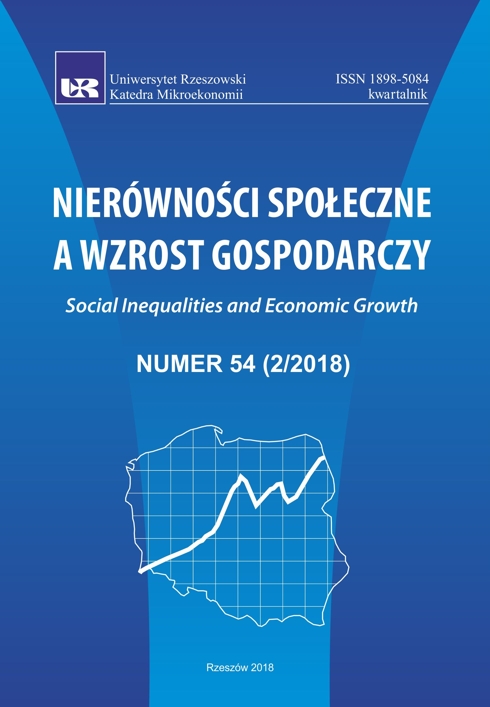Economic growth in the EMU before and after 1999
DOI:
https://doi.org/10.15584/nsawg.2018.2.2Keywords:
EMU, economic integration, euro, economic growth, transactions costsAbstract
This paper deals with economic growth in the Eurozone before and after 1999. The economic integration process led to the finalizing of initiatives that started at the end of the 1950s with the Rome Treaty and Coal&Steel Community. The introduction of the euro in the 1999 affected countries that substituted their national monies for the common currency. A question emerges; whether this last step in economic integration contributed in any manner to changes in the pace of accumulation of national wealth? The literature on growth offers a wide pattern of factors that could be responsible for GDP developments. Some of the most prominent factors were present in the focus group due to the EU’s membership and euro introduction. Trying to answer the question about growth effects in the Eurozone, a simple statistical test for mean equality in two populations (with normal distribution) was employed. The weighted average GDP per capita growth rate was tested to examine if it was statistically different in the Eurozone before and after 1999. It turned out that it was not justified at a p=0.05% confidence level to reject the hypothesis that average growth rates were not statistically different. Concluding on this result calls for the following interpretation. Introducing the euro in 1999 did not contribute in a significant manner to changing the average growth rate in the EMU. However, having a common currency in operation may have seemed neutral for economic growth at that time. Referring to the literature allows us to claim that postulated gains to economic growth materialized at earlier stages of integration. The real effects of the euro seem to have a much more subtle nature.Downloads
Downloads
Published
2020-11-13
How to Cite
Młodkowski, P. (2020). Economic growth in the EMU before and after 1999. Social Inequalities and Economic Growth, 2(54), 22–33. https://doi.org/10.15584/nsawg.2018.2.2
Issue
Section
Articles
License
Copyright (c) 2018 University of Rzeszow

This work is licensed under a Creative Commons Attribution-ShareAlike 4.0 International License.


